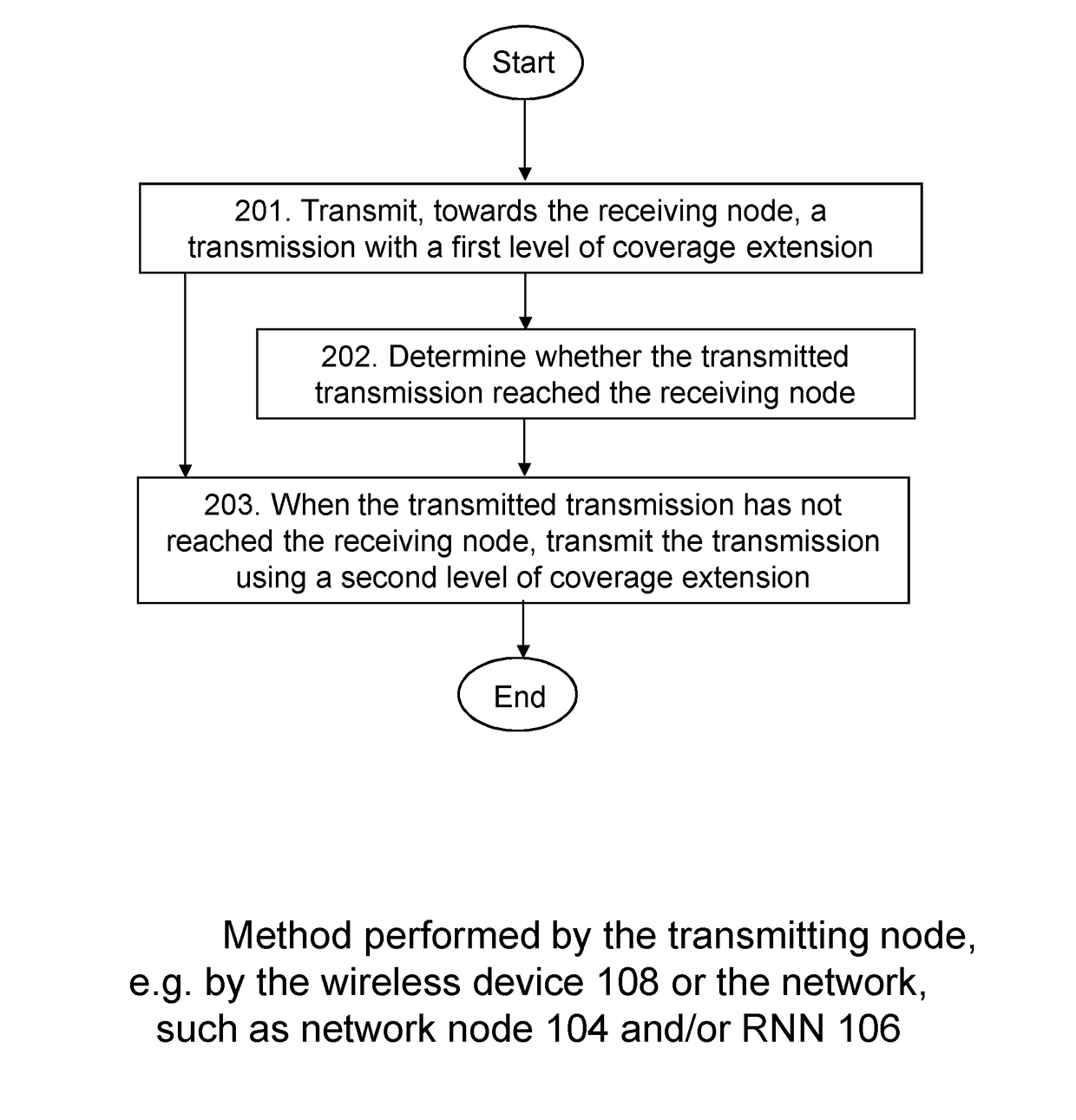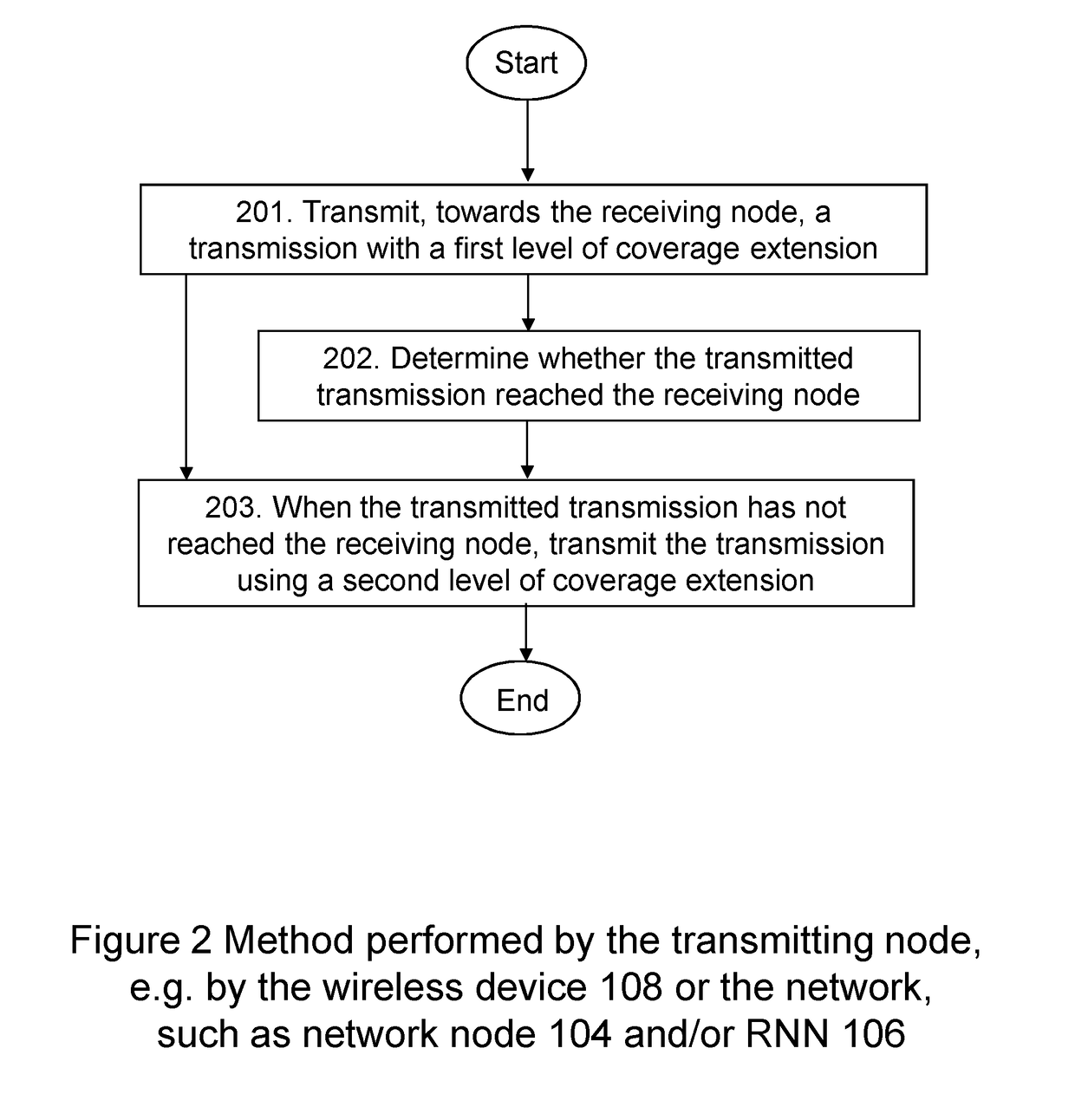Radio network node and a wireless device, and methods therein
a wireless device and network node technology, applied in the field of wireless devices, can solve the problems of high risk of unsuccessful decoding of ack/nack reports, unacceptable mobile network operators, and the number of resources used for transmission of ack/nack reports and/or assignment messages, so as to improve the robustness of control signaling, reduce the number of so-called silent fixed allocations, and improve the likelihood
- Summary
- Abstract
- Description
- Claims
- Application Information
AI Technical Summary
Benefits of technology
Problems solved by technology
Method used
Image
Examples
first embodiments
Some First Embodiments
General Application
[0211]In some first embodiments, the network, e.g. the network node 104 and / or the RNN 106, controls what CC to use when transmitting to the wireless device 108. The wireless device 108 in its turn is mandated to monitor the set of CCs possibly used by the network. This has the advantage that the network need not signal to the wireless device 108 what number of repetitions to look for, but the disadvantage that the wireless device will unnecessarily monitor the DL channel more often in the case that no data is transmitted to the device.
[0212]Exemplifying procedures for the network, e.g. the network node 104 and / or the RNN 106, and the wireless device 108 are schematically illustrated in FIGS. 6A and 6B. It may be noted that the network, e.g. the network node 104 and / or the RNN 106, and wireless device 108 behaviour may be specified so that for example only one increase of CC is applied. It may further be noted that in case a maximum CC is spe...
second embodiments
Some Second Embodiments
General Application
[0215]In some second embodiments, the network, e.g. the network node 104 and / or the RNN 106, and the wireless device 108 initially make use of the same scheme, e.g. the same Coverage Class, in each direction, according to e.g. a previous communication or a pre-determined value. For a data transfer it may e.g. be initially communicated between the wireless device 108 and the network at the assignment of resources for the transfer. The Coverage Class used may however be different in the uplink and downlink directions.
[0216]The network, e.g. the RNN 106, and wireless device 108 are then aligned on a specific point in time where the Coverage Class (CC) in the downlink (DL), uplink (UL), or both directions, is / are to be increased. The specific point in time may be communicated between the wireless device 108 and the network, e.g. the RNN 106. For example, this may be done at assignment of resources for a transfer, may be sent as broadcast informa...
third embodiments
Some Third Embodiments
[0243]Some third embodiments correspond to some second embodiments, with the difference that the change to a more robust scheme, e.g. to use a higher CC, is triggered by a specific event instead of a specific point in time. Such an event may be, as an example, that the wireless device 108 at certain points in time estimates its DL coverage, e.g. as Coverage Class, during an ongoing transfer. If the estimation indicates that the DL coverage has become worse than what was initially communicated between the wireless device 108 and the network, e.g. the network node 104 and / or the RNN 106, for the transfer, the wireless device 108 starts monitoring the DL using a more robust scheme. The event triggering the network to start using a more robust scheme may then e.g. be that the wireless device 108 informs the network about the worsened DL coverage. As an alternative, the fact that the network does not receive any, or too little amount of, data / response from the wirel...
PUM
 Login to View More
Login to View More Abstract
Description
Claims
Application Information
 Login to View More
Login to View More - R&D
- Intellectual Property
- Life Sciences
- Materials
- Tech Scout
- Unparalleled Data Quality
- Higher Quality Content
- 60% Fewer Hallucinations
Browse by: Latest US Patents, China's latest patents, Technical Efficacy Thesaurus, Application Domain, Technology Topic, Popular Technical Reports.
© 2025 PatSnap. All rights reserved.Legal|Privacy policy|Modern Slavery Act Transparency Statement|Sitemap|About US| Contact US: help@patsnap.com



